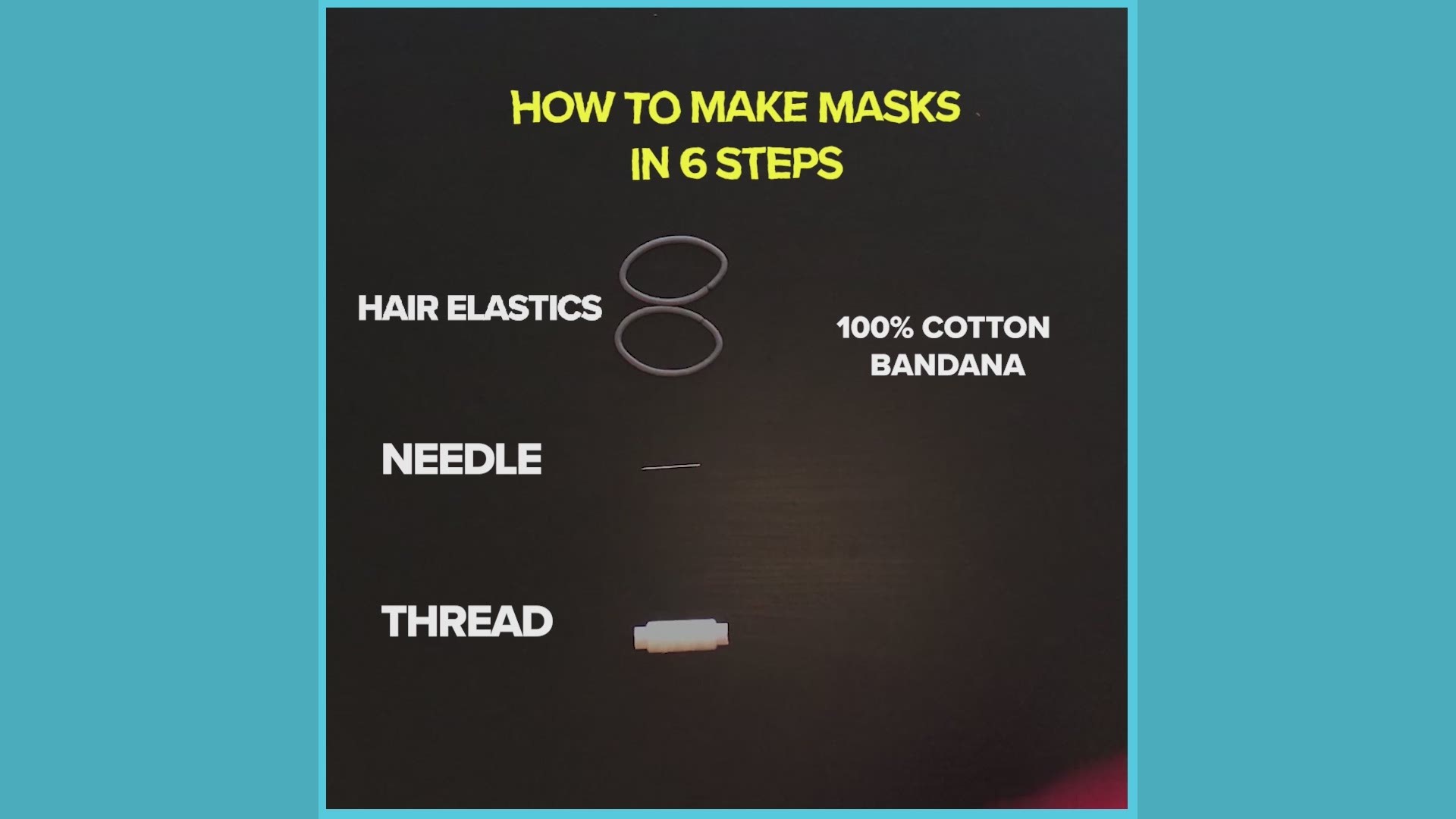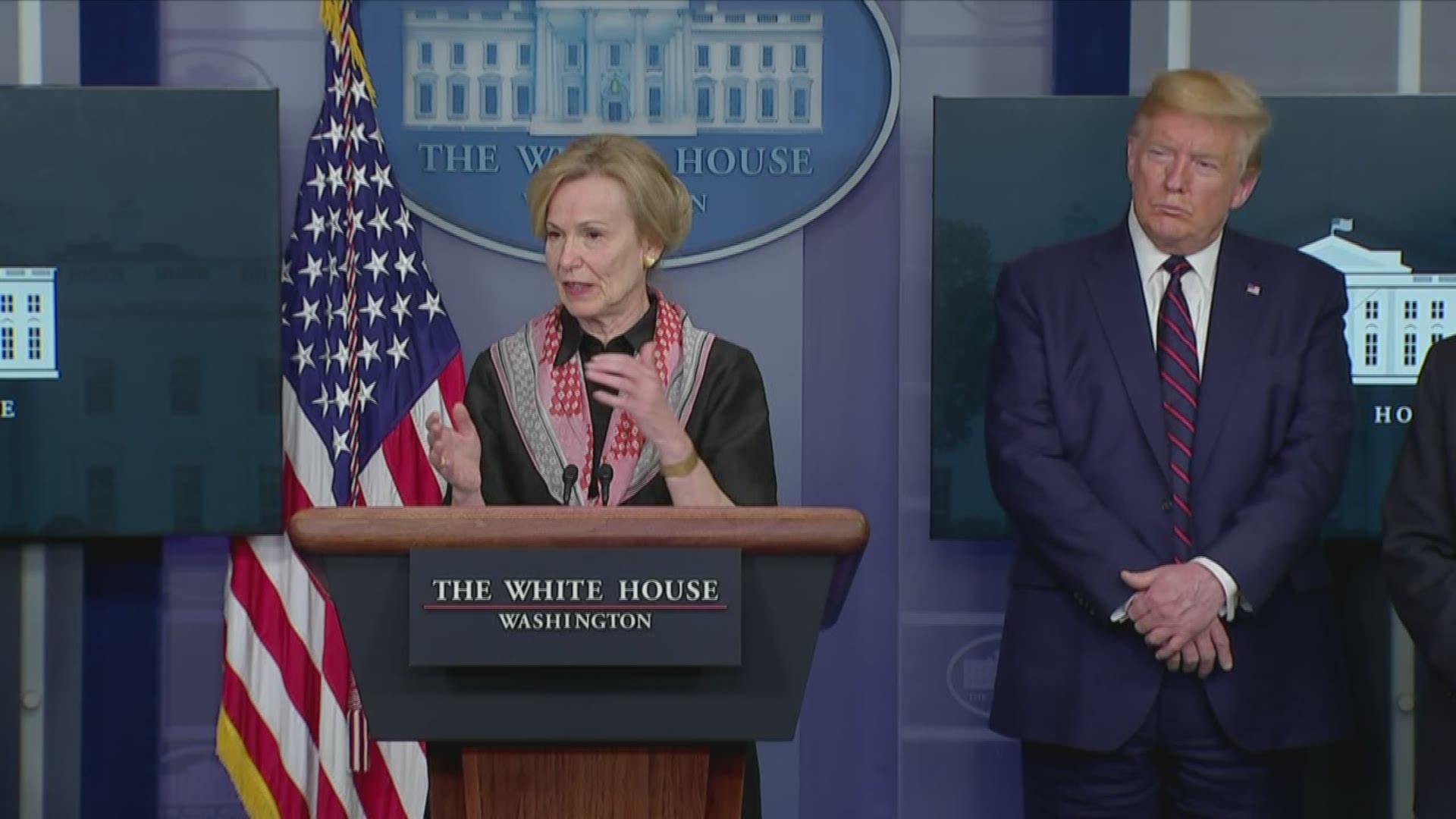WASHINGTON — As the U.S sees more cases of COVID-19, the Centers for Disease Control is now recommending Americans wear face masks in public to combat the spread of coronavirus, especially in areas with significant community-based transmission.
Health experts have stressed that they don't want people to have a false sense of security just because they may be wearing a mask. The best way to prevent the spread of the new coronavirus, which causes COVID-19, is still to wash your hands frequently and limit time outside. Americans should also avoid using medical-grade masks or respirators, which are in short supply and needed for health care workers on the front-line of the pandemic.
The updated CDC recommendations note that studies have found that people with coronavirus can transmit the virus to others before showing symptoms, or even if they never show symptoms at all.
"In light of this new evidence, CDC recommends wearing cloth face coverings in public settings where other social distancing measures are difficult to maintain (e.g., grocery stores and pharmacies) especially in areas of significant community-based transmission.
But it is relatively simple to make your own face covering in the event that you need to leave your house for essential activities, such as grocery shopping.
Here's how to make your own face mask and what you'll need. You can sew the mask together, but this method will also work if you don't have any sewing supplies
Supplies
A cotton handkerchief or tea towel
Two rubber bands or hair ties
Optional: a sewing needle and thread (or a sewing machine)
How to make a face mask
Step 1
Place your fabric face down and fold the top and bottom edges to the center.
Step 2
Flip the fabric over and fold the top and bottom edges towards the center once again.
Step 3
Flip the fabric over again and weave the left and right ends of the fabric into the two rubber bands. Fold the left and right ends behind the fabric. You can sew the ends in place at this point if you have a thread and needle or a sewing machine.
Step 4
Put the mask on by looping the rubber bands or hair ties around your ears. Make sure the mask covers your nose and mouth.


Best practices for DIY mask
Fabric options for DIY face masks
According to the Stanford Anesthesia Informatics and Media Lab, the best materials to use for a home-made mask are cotton tea towels. Vacuum cleaner bags were also effective in filtering particles, but made it harder to breathe.
According to Arizona State University professor, scientist and risk expert Andrew Maynard, face masks and respirators work because the fibers they are made of make it harder for particles to pass through the mask effectively. He recommends using materials that are not woven, as particles can pass through the holes in the woven material.
Replace or wash your mask frequently
Once you've worn a mask outside, make sure to wash it before using it again. Make two or three masks if possible so you always have a clean one on hand.
Only wear your mask when absolutely necessary
Wearing a homemade mask will not automatically protect you from catching the new coronavirus or any other airborne viruses. You will not be able to create a seal against your face with a homemade mask the way that an N95 mask does, so particles may be able to enter through those gaps in the mask.
Fabric masks will also not block the same amount of small particles as a medical-grade mask. Even the N95 mask, one of the most effective facial masks out there, only blocks 95% of small particles, according to the Centers for Disease Control and Prevention.
And just as a reminder one last time, having a face mask does not mean you should start going outside more often. The best way to protect yourself from the new coronavirus is to stay at home, wash your hands frequently and practice effective social distancing.


